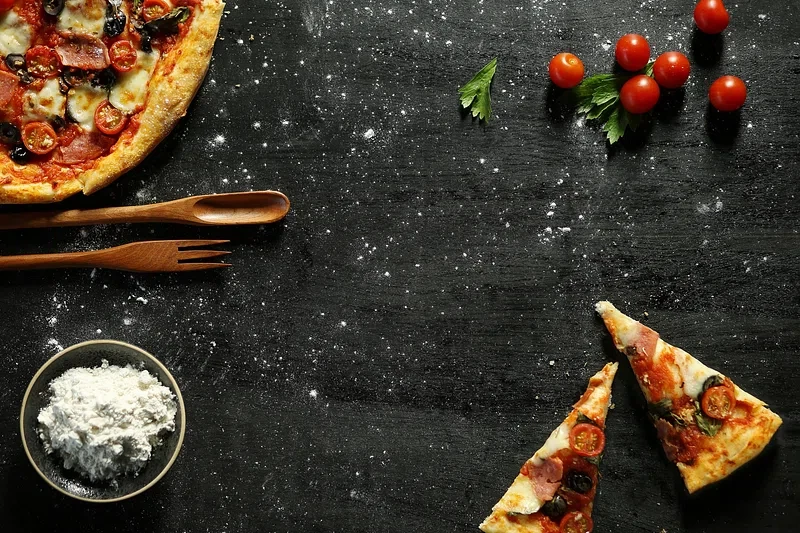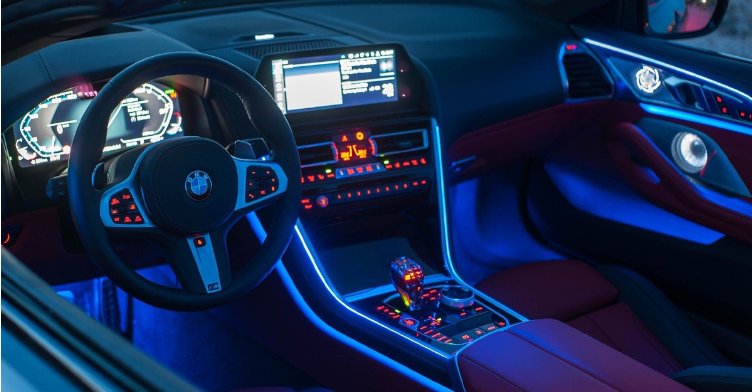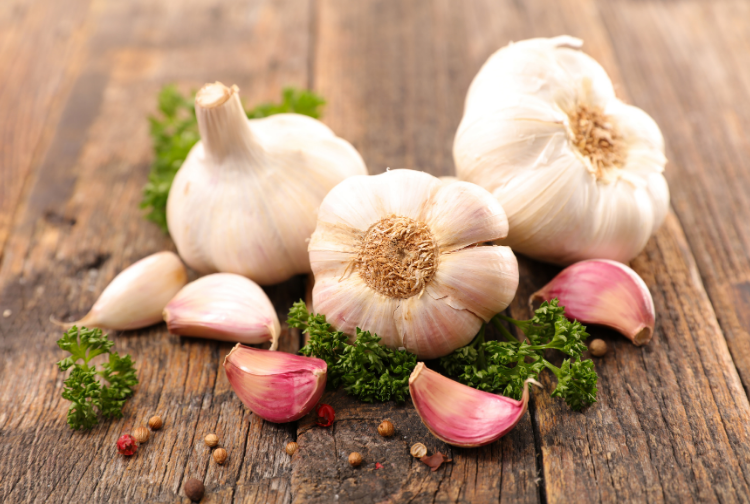Software
Strategies for Monetizing Your Restaurant App Effectively
In today’s digital age, a restaurant app is more than just a tool for reservations; it’s a powerful platform for connecting with customers and driving revenue. However, as restaurateurs dive into the world of restaurant app development services, understanding effective monetization strategies becomes crucial. The right approach can enhance user experience while boosting the bottom line.
Monetizing your restaurant app involves a blend of creativity and strategic planning. From in-app purchases and subscription models to advertising and loyalty programs, there are numerous avenues to explore. For instance, offering premium features — such as exclusive menu items or early access to special events — can entice users to make additional purchases.
Moreover, integrating a loyalty program can foster customer retention, encouraging repeat visits and increasing overall spending. Collaborating with local businesses for cross-promotions within the app can also generate additional revenue streams, while simultaneously enhancing the customer experience.
Ultimately, the key lies in striking a balance between generating income and providing value. By prioritizing user engagement and satisfaction, restaurant owners can enjoy sustained profitability while keeping their customers coming back for more.
Understanding Your Target Audience
To effectively monetize your restaurant app, it’s crucial to first understand your target audience. Begin by identifying who your primary users are — whether they are busy professionals looking for quick meal options, families wanting to order in for convenience, or foodies eager to explore new culinary experiences. Each segment has distinct preferences and spending habits that can influence how they engage with your app.
Utilize analytics tools to gather insights into user behavior. Look for patterns in how often they order, their preferred dishes, and peak usage times. This data can help tailor promotions and features that resonate with your audience. For instance, if you find that families frequently order during weekends, consider launching family meal deals or loyalty programs that reward repeat orders.
Additionally, engage with your audience through surveys or feedback forms. Understanding their pain points — like delivery times or menu variety — can lead to improvements that enhance user satisfaction and boost revenue. By aligning your monetization strategies — be it through in-app purchases, subscription models, or advertising — with the preferences and needs of your target audience, you can create a more personalized experience that drives loyalty and increases your bottom line.
Freemium Model: Offering Value Before Charging

In the competitive landscape of restaurant apps, leveraging the freemium model can be a game-changer. This strategy allows users to access a base level of service for free while enticing them to upgrade for premium features. The key is to offer genuine value from the outset, ensuring that users find the app indispensable.
Start by providing essential functionalities like menu browsing, reservation capabilities, and location-based services without charge. This not only attracts a larger audience but also builds familiarity and trust with your brand. To encourage upgrades, consider introducing premium features such as exclusive discounts, loyalty rewards, or personalized dining experiences.
A well-timed push notification about a limited-time offer or a sneak peek of a new menu item can create urgency, prompting users to explore these premium offerings. Additionally, incorporating user feedback into your premium features can enhance satisfaction and encourage word-of-mouth referrals.
Remember, the freemium model thrives on a delicate balance — ensure that the free version remains robust enough to engage users while strategically highlighting the benefits of the paid upgrade. This approach not only fosters a loyal customer base but also creates a steady revenue stream as users recognize the added value in your premium services.
Subscription Services: Creating Recurring Revenue
In the competitive landscape of the restaurant industry, subscription services present a lucrative opportunity to create a steady stream of recurring revenue. By offering a subscription model, restaurants can enhance customer loyalty while providing patrons with exclusive benefits that elevate their dining experience.
Start by defining clear tiers for your subscription plans. For example, a basic tier could offer discounts on meals or drinks, while premium tiers might include perks such as priority reservations, access to special events, or exclusive menu items. This tiered approach not only attracts a broader customer base but also encourages upselling, as diners may be tempted to upgrade for enhanced benefits.
Additionally, integrating a loyalty program within your subscription service can amplify its appeal. Reward points earned through subscriptions can be redeemed for meals or merchandise, creating a tangible incentive for customers to remain engaged.
Leverage technology by utilizing your app to facilitate easy sign-ups, renewals, and reminders for subscribers. Regularly updating subscribers with personalized offers based on their dining history can also foster a deeper connection, making them more likely to stay subscribed. Ultimately, a well-executed subscription model can transform casual diners into loyal patrons, ensuring consistent revenue for your restaurant.
In-App Advertising: Balancing User Experience and Revenue

In-app advertising can be a lucrative revenue stream for restaurant apps, but striking a balance between monetization and user experience is crucial. Users are more likely to abandon an app that bombards them with intrusive ads, so it’s essential to integrate advertising seamlessly.
Start by choosing ad formats that align with your app’s design and user journey. Native ads, which blend into the app’s content, tend to perform better than traditional banner ads. By promoting local businesses or featured menu items, you can create a win-win scenario that enhances user experience while generating revenue.
Timing is everything. Consider placing ads during natural pauses in the user experience, such as after a completed order or during a wait time for meal preparation. This approach minimizes disruption and keeps users engaged.
Additionally, offer incentives for users to interact with ads, such as discounts or loyalty points. This not only encourages engagement but also enhances the user’s perception of value, making them more likely to return.
By thoughtfully incorporating in-app advertising, you can leverage this revenue source without alienating your customers, ensuring both profitability and a positive user experience.
Partnerships and Collaborations: Expanding Your Reach
One of the most effective ways to expand your restaurant app’s reach is through strategic partnerships and collaborations. By aligning with local businesses, food delivery services, and even influencers, you can tap into new customer bases and enhance your app’s value proposition.
Consider collaborating with nearby businesses for cross-promotions. For instance, partner with a local bakery to offer exclusive discounts on dessert items when customers order through your app. This not only drives traffic to your restaurant but also fosters community ties, making your brand more relatable.
Incorporating third-party delivery services can also elevate your reach. By integrating with platforms like Uber Eats or DoorDash, you can access their established customer networks while providing convenience for your users. Offering app-exclusive delivery promotions can further incentivize orders.
Don’t underestimate the power of social media influencers; partnering with food bloggers or local celebrities can amplify your visibility. They can showcase your app and its features to their followers, creating buzz and attracting new customers.
Ultimately, thoughtful partnerships can create a win-win scenario, enhancing customer experience while driving revenue growth for your restaurant app.
Effective Promotions and Discounts Strategies
- Loyalty Programs: Reward customers for frequent visits by offering points for every purchase that can be redeemed for discounts or freebies. This builds a sense of belonging and keeps them coming back.
- Limited-Time Offers: Create urgency by introducing flash sales or limited-time discounts on specific items. This can boost traffic during slower periods and create excitement around your menu.
- Referral Discounts: Encourage existing customers to refer friends by offering both parties a discount on their next order. This not only expands your customer base but also fosters community.
- Seasonal Promotions: Align your discounts with holidays or local events. For example, offer special deals for Valentine’s Day or during a local festival, tapping into the festive spirit of your customers.
- Bundle Deals: Create attractive meal bundles at a discounted rate. This not only increases the average order value but also simplifies decision-making for customers.
Leveraging Data Analytics for Revenue Optimization
In today’s competitive restaurant landscape, leveraging data analytics can significantly enhance your app’s revenue potential. By harnessing customer insights, restaurants can tailor offerings to meet specific preferences, increasing both engagement and sales. For instance, analyzing purchase histories allows you to identify popular dishes and peak ordering times, enabling targeted promotions that maximize profits.
Utilizing A/B testing within the app can further refine marketing strategies. Experimenting with different pricing models, promotional offers, or loyalty programs helps pinpoint what resonates most with your audience. Additionally, implementing predictive analytics can forecast trends, providing valuable foresight into inventory management and staffing needs — essential for minimizing costs.
Integrating customer feedback mechanisms within your app can yield real-time insights that inform menu adjustments and service enhancements. This not only improves the customer experience but also fosters loyalty, encouraging repeat business.
Furthermore, segmenting your audience based on behavior allows for personalized marketing campaigns. Tailored notifications about exclusive deals or events can drive traffic during slower periods, optimizing revenue streams. By making data-driven decisions, you can ensure your restaurant app not only attracts users but also converts them into loyal patrons, ultimately boosting your bottom line.
Enhancing User Engagement to Drive Sales
To effectively monetize your restaurant app, enhancing user engagement is paramount. Start by personalizing the user experience — leveraging data analytics to tailor recommendations based on previous orders, dietary preferences, or even special occasions like birthdays. This approach not only fosters loyalty but also encourages repeat visits, increasing the likelihood of upselling.
Integrate gamification features, such as reward points for frequent orders or interactive challenges that unlock exclusive discounts. Not only does this create a fun, engaging atmosphere, but it also incentivizes users to return frequently, driving up overall sales.
Push notifications can be a powerful tool when used judiciously. Send timely alerts about limited-time offers, new menu items, or special events to encourage immediate action. However, balance is key; overusing notifications can lead to app fatigue, resulting in users opting out.
Social sharing features can further amplify engagement. Encourage users to share their dining experience on social platforms directly through the app, offering discounts or freebies in return. This not only increases visibility but also taps into the power of word-of-mouth marketing, drawing in a wider audience and ultimately leading to increased sales.
Conclusion: Future Trends in Restaurant App Monetization
As the digital landscape continues to evolve, restaurant app monetization strategies are becoming increasingly innovative. One prominent trend is the integration of artificial intelligence and machine learning, which allows for hyper-personalized dining experiences. By analyzing user preferences and behavior, restaurants can offer tailored promotions and menu recommendations, fostering customer loyalty and driving incremental revenue.
Additionally, subscription models are gaining traction, with restaurants offering exclusive deals or loyalty perks for a monthly fee. This approach not only ensures a steady income stream but also deepens customer engagement.
Another exciting development is the rise of social dining experiences through app features that enable users to share their dining experiences, post reviews, or even invite friends to join them. This social aspect not only enhances user engagement but also serves as a powerful marketing tool, effectively driving new customer acquisition.
Finally, as sustainability becomes a key consumer concern, apps that promote eco-friendly practices — such as sourcing locally or reducing food waste — can attract environmentally conscious diners. By leveraging these trends, restaurant apps can enhance their value proposition, ensuring they remain relevant in a competitive market while maximizing profitability.


 Travel2 years ago
Travel2 years agoPractical And Essential Car Interior Accessories To Add Comfort And Convenience To Your Drive

 Business2 years ago
Business2 years agoTop Reasons Why you Need to Consider Outsourcing Real Estate Photo Editing

 Business2 years ago
Business2 years agoDead And Co Setlist What They Played At The Gorge Amphitheatre

 Featured2 years ago
Featured2 years agoHow to Make a Sports Career in India

 Health2 years ago
Health2 years agoGarlic Is The Best Vegetable To Treat Heart Problems

 Sports2 years ago
Sports2 years agoHow to watch the ETSU game -What are the benefits of watching the ETSU game?

 Health2 years ago
Health2 years ago5 Reasons to Choose Turkey for Dental Treatments

 Travel2 years ago
Travel2 years agoSpectacular Hot Air Balloon Rides in Goa